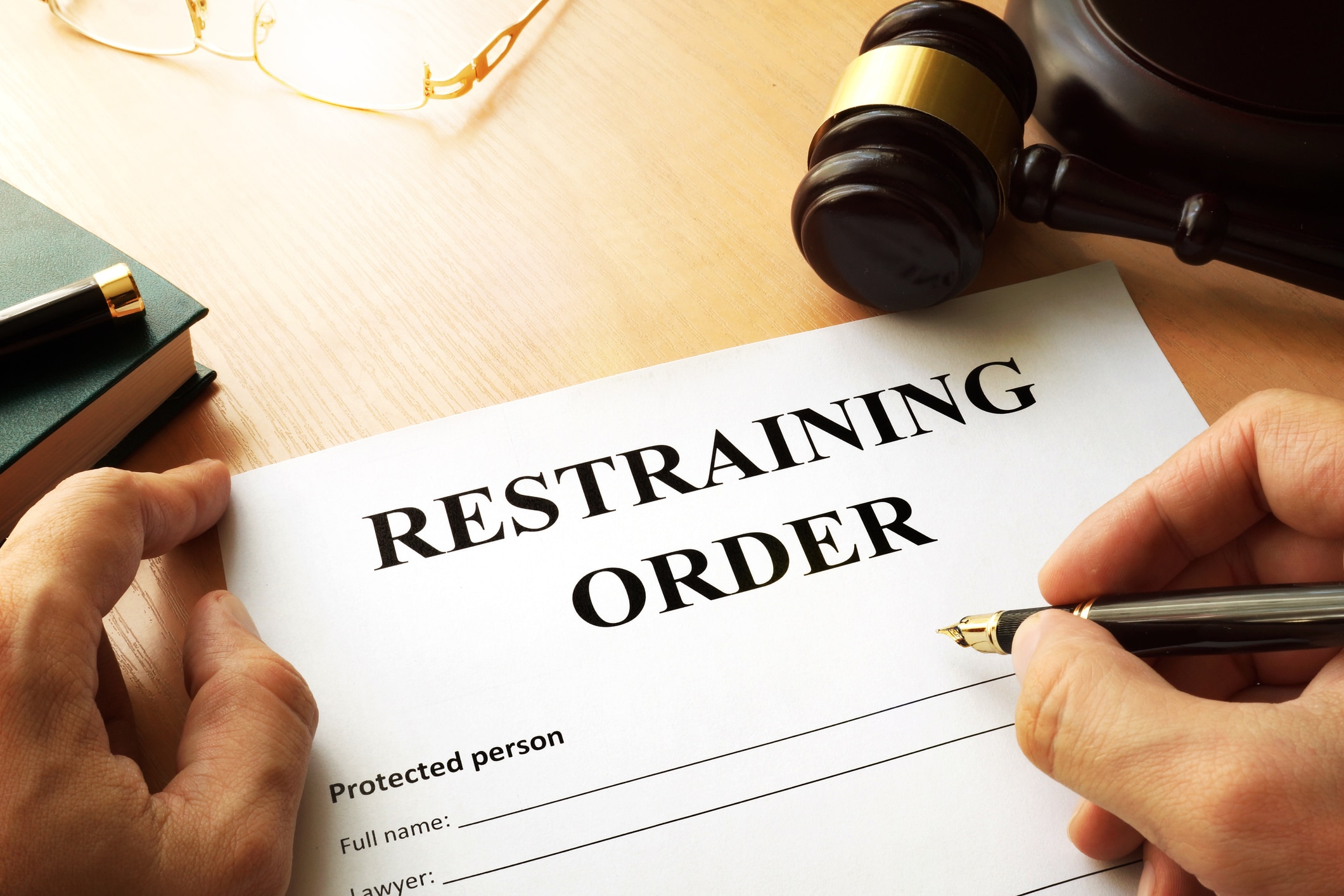Obtaining or terminating a restraining order is far from being a simple, cut-and-dry process. Whether you’re attempting to file a restraining order or are on the receiving end of one, the Law Office of Cherish Om is here to offer top-tier legal advice. Contact us online to learn more.
A restraining order (sometimes referred to as a protective order) is a civil court order issued to protect an individual or individuals against harassment or harm.
To file for a restraining order, you may need to prove to the court that without the restraining order, you will be subjected to abuse, domestic violence, stalking, assault or another type of harassment or harm. Filing a restraining order is often more challenging and lengthy than anticipated, and in many cases, successful completion of this process requires legal assistance from an experienced restraining order lawyer.
Receiving a restraining order can also be a frustrating process. Learning the parameters of the restraining order served to you, as well as the limitations you’ll be facing in your day-to-day schedule and interactions is a job in and of itself.
Fortunately, a restraining order lawyer can help you navigate this process and understand your rights as the recipient or filer. This article will explain everything you need to know about how a restraining order lawyer can help you, from determining what precipitated the restraining order to your options for terminating it.
You’re not alone. Whether you believe that you’ve been served an unlawful restraining order or you’re living in fear of constant harassment and violence, the Law Offices of Cherish Om is here to advocate for your future. Contact our Watsonville law firm online to learn more.
Understanding Restraining Orders
As we mentioned earlier, a restraining order or order of protection is a legal order issued by a judge limiting or terminating the contact of one party to another. This may include any combination of the following:
- In-person contact
- Phone calls
- Texting
- Interaction on social media
- Letters or gifts by mail
- Third-party interactions (i.e having a family member or loved one contact the alleged victim on the perpetrator’s behalf)
Sometimes, a restraining order applies to more than one person. In addition to the “protected person” (the person getting the restraining order), a restraining order may also apply to family or household members of the protected person.
Types of Restraining Orders
While most people are familiar with the general definition of a restraining order, many are unaware that they come in several different forms. California courts recognize 6 types of restraining orders, each of which is defined by the nature of the relationship between parties and the type of harm or harassment anticipated by the petitioner:
- Civil harassment restraining order: appropriate for cases of harassment by someone you don’t consider a friend, relative, or romantic partner
- Elder abuse restraining order: for cases in which the victim of abuse is over 65 and needs protection from a relative or caretaker
- Workplace violence restraining order: an order petitioned by an employer to protect an employee
- School violence restraining order: petitioned by a college or university official in order to protect a student
- Gun violence restraining order: initiated by a concerned citizen or a police officer in order to block someone from purchasing or possessing a firearm
- Domestic violence restraining order: appropriate for restraining order cases in which the petitioner is a victim of violence from a close relationship
A restraining order in California must be issued by a judge in order to be enforced by law enforcement. In most situations, the petitioners of restraining orders are victims of domestic violence, abuse and other forms of unwanted contact. The purpose of a restraining order is to protect these petitioners and the
Domestic Violence Restraining Orders
A domestic violence restraining order is arguably the most commonly filed type of restraining order and deserves a thorough exploration. In order to file a domestic violence restraining order, the petitioner must be seeking protection from one of the following:
- A current or previous spouse or a romantic or sexual partner
- A close family member such as a child, parent, sibling, in-law or grandparent
Additionally, this close family member, spouse or ex must also be the perpetrator of the alleged abuse. This abuse includes any of the following:
- An act of domestic violence
- Financial abuse
- Emotional abuse
- Sexual harassment or sexual assault
- Physical neglect
The domestic violence restraining order itself can include one or several individual orders depending on the level of need, proof of danger or other circumstances. Here are some of the individual orders they may include:
- Emergency Protective Order (EPO). In situations of immediate danger, law enforcement officers can request an EPO to provide short-term protection for the victim. EPOs are temporary, usually lasting only a few days until the victim can secure a more permanent order.
- Temporary Restraining Order (TRO). TROs are often the next step after an EPO and can be obtained quickly without the alleged abuser present. Temporary orders are valid for a short period, typically until a scheduled court hearing where both parties have the opportunity to present their cases.
- Permanent Restraining Order. Following a court hearing, a judge may issue a permanent restraining order if there is sufficient evidence of domestic violence. These orders can last for several years and may include provisions related to contact, residence, and child custody.
- Stay-Away Order. In cases where physical violence or credible threats exist, a court may issue a stay-away order, mandating that the alleged abuser stays a certain distance away from the victim, their home, workplace, or other specified locations.
These specific orders are not limited to domestic violence cases. In fact, many of the same orders appear in other types of orders and areas of law. However, they are particularly prevalent in family law cases.

Restraining Orders in Family Law
Family law typically relates to issues surrounding family relationships, domestic partnerships, marriage, divorce, child custody, adoption and other matters concerning the family unit. The primary objective of family law is to provide a legal framework for resolving disputes and establishing legal relationships within families.
Restraining orders come up frequently in family law, adding a layer of complexity to already challenging situations. For example, a mother may need to file a restraining order against a father who has child support obligations or visitation rights. She may feel as though she must choose between living in fear or receiving child support. It’s critical that anyone in this type of complex situation reach out to an experienced family law attorney for guidance.
The process of filing a restraining order can be a challenging and lengthy process, especially if you’re doing it alone. Contact the Law Office of Cherish Om to schedule a consultation with a compassionate attorney who can help you navigate these challenging legal waters.
How Can I File a Restraining Order in California?
Before filing a restraining order in California, you’ll need to determine the type of order you want to file and whether or not you meet the necessary criteria. It’s important to note that while some types of restraining orders require you to prove that the person you’re filing the order against is actively harassing or abusing you, not all of them have this requirement.
Additionally, the relationship you have with the perpetrator matters. For example, a domestic violence restraining order can be filed against a brother or sister but not against an uncle, and a civil harassment restraining order can be filed against a stranger but not your ex-girlfriend.
Once you’ve determined the type of restraining order filed and the level of proof you’ll need to provide, the next step is to request, complete, and submit the necessary forms for filing the restraining order. You can find these at the court in the county where either you or the perpetrator reside. If there is an immediate threat to your safety, request an emergency protective order. This will be a very temporary but effective way to protect yourself until you receive your hearing.
When the restraining order hearing date arrives, the judge will examine the evidence of abuse or harassment and decide whether or not to grant the restraining order. If granted, the judge will determine the specific parameters of the order, the amount of time the order will be active and the proceedings for termination.

How to Terminate a Restraining Order in California
A restraining order is not always permanent. While some restraining orders will eventually expire, others will require going through the court to officially terminate the restraining order. This can be done by either party. However, it’s important to note that this should always be done through a restraining order attorney or restraining order defense lawyer, and never through the communication of one party to another.
Once you’ve hired legal counsel for this process, you’ll begin by filling out and submitting the appropriate paperwork through the county court. You’ll receive a hearing date for the termination where both parties will submit their evidence to the judge, who will decide whether or not granting the termination will be in the best interest of both parties or if the restraining order itself was lawful to begin with.
The Law Office Of Cherish Om: Trusted Restraining Order Lawyers In California
Still not sure how to proceed with your restraining order? Don’t stress—The Law Office of Cherish Om has the expertise, resources and passionate advocacy you need to secure or terminate a restraining order. With a winning track record in the courtroom and top-tier strategic planning leading up to your day in court, we have everything you need to be successful.
When you’re ready to explore your legal options, contact The Law Office of Cherish Om online to schedule an initial consultation.

(831) 281-4964
om-law@outlook.com
1050 S. Green Valley Rd.
Watsonville, Ca 95076
